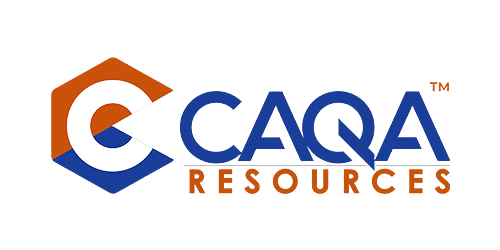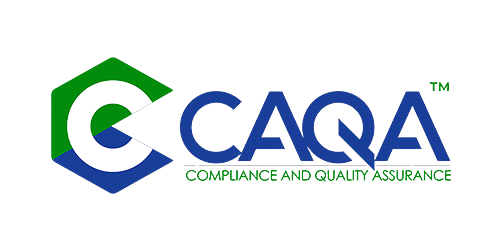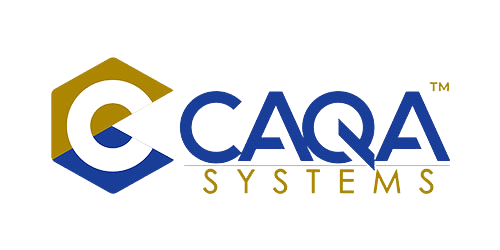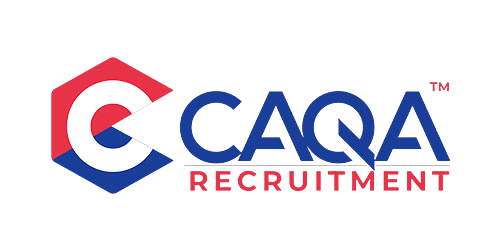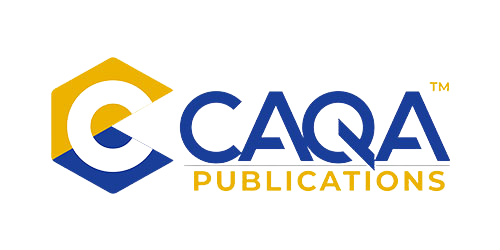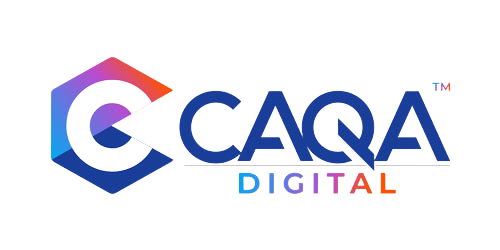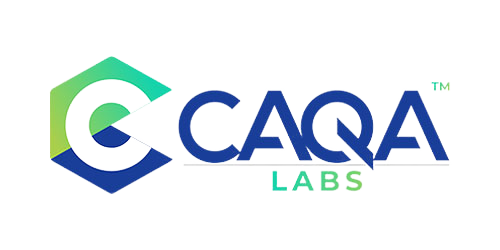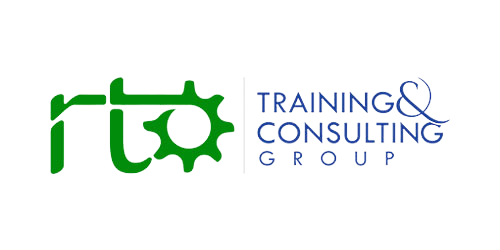The revised Standards for RTOs (2025) lift the bar on assessment quality. A headline change is the requirement that every assessment tool is reviewed before use to confirm validity, reliability, and full alignment with the Principles of Assessment and the Rules of Evidence. This is not limited to new tools. It also captures legacy resources that have not yet been tested against the current standards and training product requirements. The intent is clear: outcome-based compliance, fewer assessment errors, and a stronger assurance that graduates are genuinely competent.
Why pre-use assessment tool reviews are now mandatory
Pre-use means before the tool is released to trainers or assessors for live delivery with learners. The review must verify that the tool:
-
Matches the current training product on training.gov.au, including elements, performance criteria, foundation skills, assessment conditions, and licensing or regulatory notes.
-
Operationalises the Principles of Assessment: validity, reliability, fairness, and flexibility.
-
Satisfies the Rules of Evidence: validity, sufficiency, authenticity, and currency.
-
Reflects contemporary industry practice and equipment.
Recent compliance analyses have shown that more than a quarter of audit findings arise from ill-aligned assessment tools or the absence of a structured pre-use review. The new settings aim to eliminate that avoidable risk by making the review step compulsory and evidence-based.
Outcome Standard 1.3: the core requirement
Under Outcome Standard 1.3, Performance Indicator 2 expects RTOs to:
-
Demonstrate that assessment instruments consistently reflect each nationally recognised training product to be delivered.
-
Document and action a pre-use review for each tool before it reaches learners.
-
Update tools where gaps or risks are identified and retain evidence that those amendments occurred before deployment.
This is a decisive move away from procedural box-ticking. It demands robust artefacts that show the assessment is capable of producing reliable and valid competency decisions.
How Standard 1.3 links to Standard 1.4
Standard 1.4 defines the Principles of Assessment and Rules of Evidence that must underpin every assessment decision. The pre-use review is the practical mechanism that ensures:
-
Fairness and flexibility through reasonable adjustment pathways, alternative evidence options, and clear candidate instructions.
-
Validity and reliability through assessment tasks that genuinely measure required skills and knowledge, and produce consistent outcomes when used by different assessors.
-
Sufficiency, authenticity, and currency through multi-method evidence plans, authentication steps, and time-bound or workplace-verified artefacts.
A systematic pre-use review is the clearest way to prove that your tools will support assessors to apply 1.4 in real contexts.
Compliance benefits of a strong pre-use review discipline
RTOs that embed a structured, expert-led review process see tangible returns:
-
Higher audit success because tools are already mapped, tested, and evidenced.
-
Fewer rectifications and lower risk of sanctions linked to assessment non-compliance.
-
Better learner outcomes as tasks mirror real work, and assessment instructions are unambiguous.
-
Improved industry confidence through visible alignment to current practice and technology.
What a robust pre-use review must include
Use the checklist below to standardise reviews across your organisation. Keep all outputs with version control in your quality repository.
-
Technical alignment to training.gov.au
-
Mapping from each task to elements, performance criteria, performance and knowledge evidence, foundation skills, and assessment conditions.
-
Confirmation that contextualisation respects the intent and breadth of the unit.
-
Design against Standard 1.4
-
Evidence that fairness, flexibility, validity, and reliability are designed in.
-
Authentication steps for third-party and online evidence.
-
Sufficiency tests, including multi-method collections or staged tasks.
-
Assessor resources
-
Detailed assessor guides with decision rules, benchmarks, model answers, and observable behaviour cues.
-
Guidance on reasonable adjustment that maintains integrity.
-
Clear recording tools to capture evidence and judgments.
-
Candidate resources
-
Plain-English task instructions, conditions, and submission requirements.
-
Explanation of allowable resources and time limits.
-
Information on reassessment, appeals, and academic integrity expectations.
-
Industry relevance
-
Evidence of recent industry input or validation that tasks replicate real work with current tools and processes.
-
Confirmed availability of facilities, equipment, and software specified in assessment conditions.
-
Risk and integrity controls
-
Identity verification for online assessments.
-
Plagiarism and collusion controls.
-
Third-party report authenticity checks and supervisor capability criteria.
-
Trialling and calibration
-
Small-scale pilot or “dry run” with assessors to identify ambiguity or reliability risks.
-
Assessor calibration notes to align judgments before live use.
-
Decision and release
-
Recorded review outcome, required amendments, responsible person, and due dates.
-
Version issue with date, approver, and deployment plan.
Building a repeatable workflow: RACI and cadence
Roles and responsibilities (example RACI)
-
Assessment writer: drafts or updates the tool (Responsible).
-
Lead assessor/validator: conducts technical and 1.4 review (Responsible).
-
Industry representative: checks realism and currency (Consulted).
-
Compliance manager: authorises release, maintains evidence, oversees versioning (Accountable).
-
Trainers/assessors cohort: calibrates and provides feedback (Informed/Consulted).
Cadence
-
Before first use: full review and approval.
-
After each delivery cycle, moderation and improvement actions are logged.
-
Annually or on change: re-review for training product updates, equipment changes, or industry practice shifts.
-
Trigger events: audit findings, complaints, or integrity incidents prompt immediate review.
Evidence pack: what to keep
Auditors will expect to see a neat, traceable pack for each tool:
-
Current tool set (candidate and assessor versions).
-
Mapping matrix to unit requirements.
-
Pre-use review record with sign-offs and actions.
-
Industry consultation evidence and a note on how feedback changed the tool.
-
Calibration notes or pilot feedback.
-
Version control and change log.
-
Post-delivery moderation or validation outcomes with improvements carried forward.
Common gaps identified in pre-use reviews (and how to fix them fast)
-
Unclear benchmarks: Add explicit performance standards and model answers; include observable behaviour lists for practicals.
-
Insufficient evidence: Introduce a second method or staged task to reach sufficiency.
-
Authenticity risk: Tighten authentication by requiring live demonstrations, annotated workplace artefacts, or supervisor confirmation.
-
Outdated scenarios: Replace with current equipment, software versions, and regulatory settings.
-
Accessibility shortfalls: Rework instructions, add alternative formats, and define reasonable adjustments.
-
Weak third-party reports: Specify supervisor role, evidence prompts, and attach guidance for objective feedback.
-
Online identity gaps: Implement identity checks at submission or proctoring for critical tasks.
Eight action steps to close gaps after a review
-
Document the gap with precise references to the unit and standard affected.
-
Analyse the root cause using 5 Whys or a Fishbone Diagram.
-
Redesign the tool tasks, instructions, and benchmarks to close the gap; re-map to the unit.
-
Validate internally and externally against the Principles and Rules; moderate where possible.
-
Update versions and retain a change log.
-
Train assessors on what changed and why, including decision rules.
-
Implement and monitor the revised tool in delivery with targeted moderation.
-
Report and record outcomes in your improvement register and at governance meetings.
Corrective action plan templates you can adopt today
Corrective Action Plan (Full)
Section 1: Gap identification
-
Tool name:
-
Units/qualification:
-
Review date and reviewer:
-
Gap description:
-
Standard/criteria not met:
Section 2: Root cause analysis
-
Root cause:
-
Method used (5 Whys, Fishbone):
Section 3: Recommended actions
|
Action |
Owner |
Due date |
Priority |
Status |
|
Update mapping to training.gov.au |
Assessment writer |
DD/MM/YYYY |
High |
In progress |
|
Clarify benchmarks and model answers |
Lead assessor |
DD/MM/YYYY |
High |
Not started |
|
Moderate with industry reps |
Validation lead |
DD/MM/YYYY |
High |
Complete |
|
Add authentication steps |
Compliance manager |
DD/MM/YYYY |
Medium |
Not started |
Section 4: Implementation and monitoring
-
Implementation plan:
-
Monitoring method and dates:
-
Follow-up review date:
Section 5: Evidence and sign-off
-
Supporting artefacts listed:
-
Approver name and date:
Rapid Corrective Action (Short Form)
-
Gap found:
-
Immediate correction:
-
Responsible officer and deadline:
-
Verification method:
-
Evidence filed at:
-
Follow-up date:
Use the full plan for systemic issues and the rapid form for simple fixes with low risk.
Special notes for online, workplace, and third-party contexts
Online assessment
-
Identity verification, proctoring options, and IP/device checks for critical tasks.
-
Accessibility for all digital content and clear service levels for feedback and contact.
-
Data retention and privacy are aligned with your records policy.
Workplace evidence
-
Clear host site criteria, safety responsibilities, and supervisor capability.
-
Structured logbooks with observable tasks linked to unit outcomes.
-
Assessor observations where the unit requires demonstration in real or realistic settings.
Third-party arrangements
-
Contracts that define tool use, assessor guidance, evidence flows, and monitoring.
-
Oversight sampling of evidence and judgments to confirm reliability.
-
Immediate escalation and review triggers for non-conformities.
A two-page quick checklist for pre-use reviews
Page 1: Tool and mapping
-
Code, title, version current.
-
Full mapping to elements, PC, KE, PE, FS, and conditions.
-
Contextualisation within unit breadth.
-
Licensing or regulatory notes addressed.
Page 2: Principles and Rules
-
Fairness and flexibility pathways documented.
-
Validity and reliability are designed in with clear benchmarks.
-
Sufficiency plan with multi-method evidence.
-
Authenticity checks proportionate to risk.
-
Currency confirmed for workplace artefacts.
People and resources
-
Assessor guide complete; candidate guide clear and accessible.
-
Facilities and equipment are listed and available.
-
Industry check completed within 12 months.
Integrity and risk
-
Online identity control is defined.
-
Third-party report design and supervisor criteria set.
-
Plagiarism and collusion guidance included.
Governance
-
Review record and approvals filed.
-
Version and change log updated.
-
Calibration planned before first use.
-
Validation and moderation schedule linked.
A robust pre-use review can be the difference between an assessment tool that merely exists on paper and one that performs reliably in real classrooms, workplaces and audits. This two-page quick checklist distils the essentials, helping teams confirm alignment, evidence quality and governance before first delivery. Page one focuses on the tool and its mapping, while page two concentrates on the principles, rules, people, resources, integrity, risk and governance routines that keep quality visible and defensible.
Page one begins with the fundamentals: the code, title and version of the assessment tool must be current and unambiguous, matching the unit of competency as it appears on the national register and reflecting the latest release and any superseding changes. From there, the review verifies that mapping is genuinely complete, not superficial. Every element and performance criterion is accounted for, each knowledge evidence item is addressed with fit-for-purpose tasks, and performance evidence requirements are met with observable outputs or artefacts. Foundation skills and assessment conditions are fully incorporated rather than left implied, ensuring that language, literacy, numeracy and digital requirements, as well as any specific contexts, equipment or supervision settings, are built into the design. The tool’s contextualisation is checked within the breadth of the unit so that scenarios, resources and benchmarks are authentic to the industry without narrowing the competency beyond what the unit allows. Any licensing or regulatory considerations—especially those tied to co-regulatory schemes or “Licence to…” outcomes—are clearly addressed, with notes explaining recognition pathways, mandatory equipment or environmental controls, and any prerequisite credentials, so that learners and assessors are not exposed to non-recognition risk.
The second page turns to the principles and rules that underpin credible assessment. Fairness and flexibility must be more than slogans; pathways for reasonable adjustment and flexible arrangements need to be documented so candidates can demonstrate competence without compromising the integrity of outcomes. Validity and reliability should be designed in from the outset, with clear benchmarks and decision rules that different assessors can apply consistently across cohorts and contexts. Sufficiency is addressed through a multi-method evidence plan, combining direct observation, product review, questioning and third-party attestations as appropriate to the unit, while avoiding unnecessary duplication. Authenticity checks are proportionate to risk, using methods such as supervised tasks, controlled conditions, oral defence of submissions, traceable artefacts and, where needed, verification from the workplace. Currency is explicitly confirmed for workplace artefacts so that evidence reflects current standards, technology and practices rather than legacy procedures.
People and resources complete the operational picture. The assessor guide must be complete, sequenced and practical, with clear instructions, decision rules, model answers or benchmarks where relevant, and space to record judgements. The candidate guide should be clear, plain-English and accessible, explaining tasks, conditions, timing and support without ambiguity, and ensuring learners understand expectations before they begin. Facilities and equipment are listed with precision and confirmed available, matching the assessment conditions of the unit and reflecting industry-standard technology; any simulation requirements are justified and designed to support authentic performance. The review also confirms that an industry check has been completed within the last twelve months, so that current tools, regulations and workplace realities have shaped the tasks and benchmarks in a timely way.
Integrity and risk controls need to be explicit and right-sized. Online identity management is defined for digital delivery, setting out authentication points, invigilation or proctoring arrangements and any data safeguards to protect student privacy while assuring that the right person is completing the right task. Third-party report design is purposeful, with criteria that supervisors can reasonably observe and attest to, aligned with the unit’s outcomes and accompanied by guidance about evidence boundaries and conflicts of interest. Clear guidance on plagiarism and collusion is embedded in the candidate information and reinforced in the assessor guide, detailing how suspected academic misconduct will be identified, investigated and resolved, and how legitimate collaboration is differentiated from collusion in workplace settings.
The governance layer ensures the tool will stand up to scrutiny over time. A review record and approvals file show who examined the tool, what changes were requested, and when sign-off occurred, creating an attributable trail that auditors can follow. Version control and a change log are updated contemporaneously so teams can see the lineage of improvements and link them to validation findings, industry input or regulatory updates. Calibration is planned before first use so assessors can rehearse applying the benchmarks, compare sample judgements and iron out ambiguity before candidates are affected. Finally, the validation and moderation schedule is explicitly linked to the tool, with risk-based timing that prioritises early offerings and high-stakes units, named validators who meet credential requirements, and a clear pathway for recommendations to translate into revised artefacts and follow-up impact checks.
Taken together, these two pages of a checklist turn quality from an abstract aspiration into a concrete habit. It anchors every tool to current standards, proves complete coverage of outcomes, embeds the principles of fairness, validity, reliability, sufficiency, authenticity and currency, equips assessors and candidates with usable guides, secures the facilities and equipment that make performance authentic, and locks in integrity controls that protect learners, employers and the RTO alike. Just as importantly, it ties the tool to a governance rhythm—approvals, versioning, calibration, validation and moderation—so that improvement is continuous and evidence is always contemporaneous and attributable. When pre-use reviews follow this discipline, assessors make more confident judgements, learners experience clearer tasks and feedback, employers get graduates whose competence transfers to the job, and auditors encounter a living system rather than a paper façade.
Bringing it together
The Standards for RTOs (2025) make one thing unmistakable. Assessment quality must be proven up front, not repaired after the fact. A disciplined pre-use assessment tool review is now a non-negotiable control that protects learners, assessors, and providers. It ensures tools are current, valid, reliable, and industry-relevant before they reach the classroom, job site, or online portal. Build the workflow, assign the roles, keep the evidence, and keep improving. The pay-off is fewer audit shocks, stronger employer confidence, and graduates whose competence stands out anywhere.









